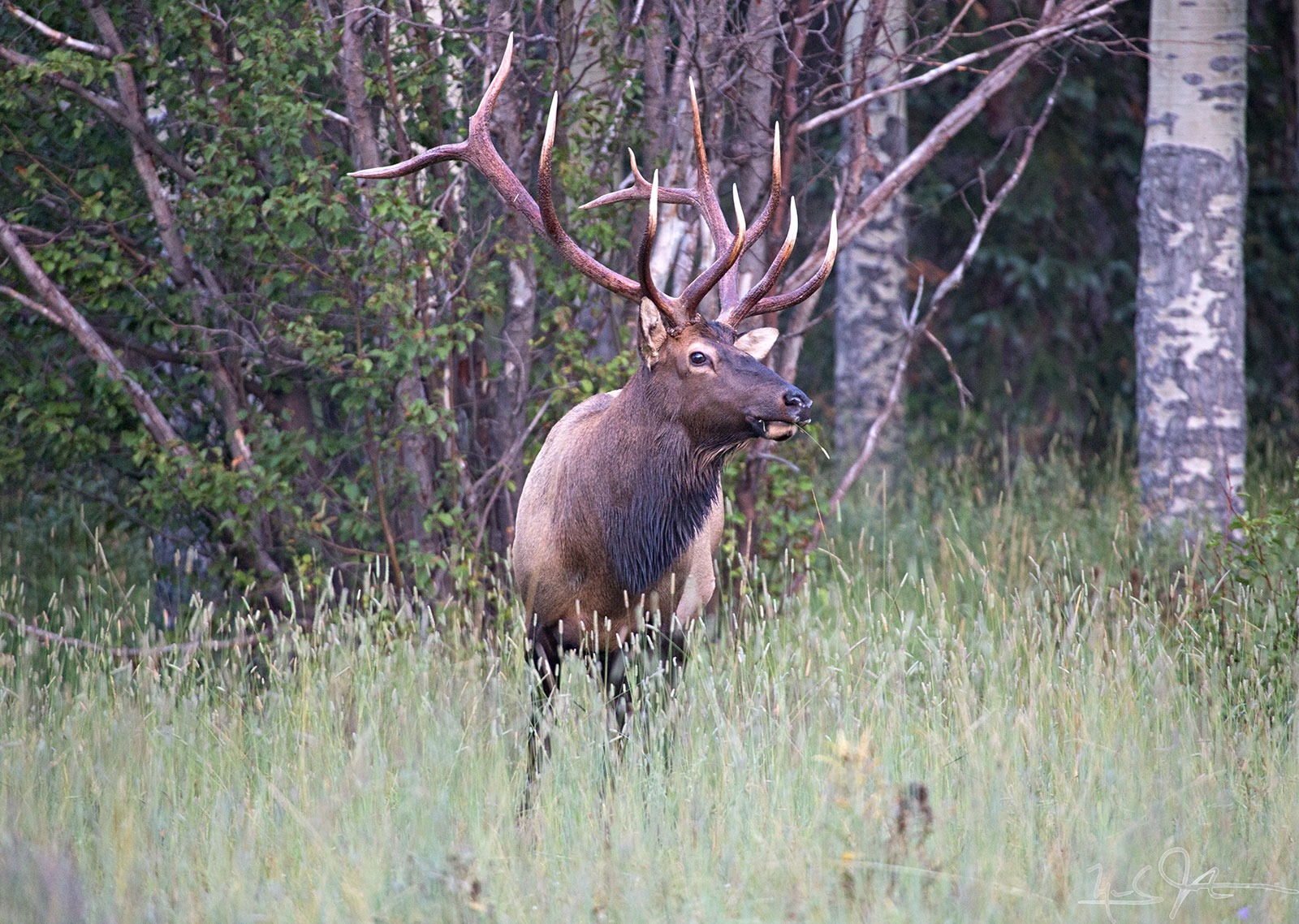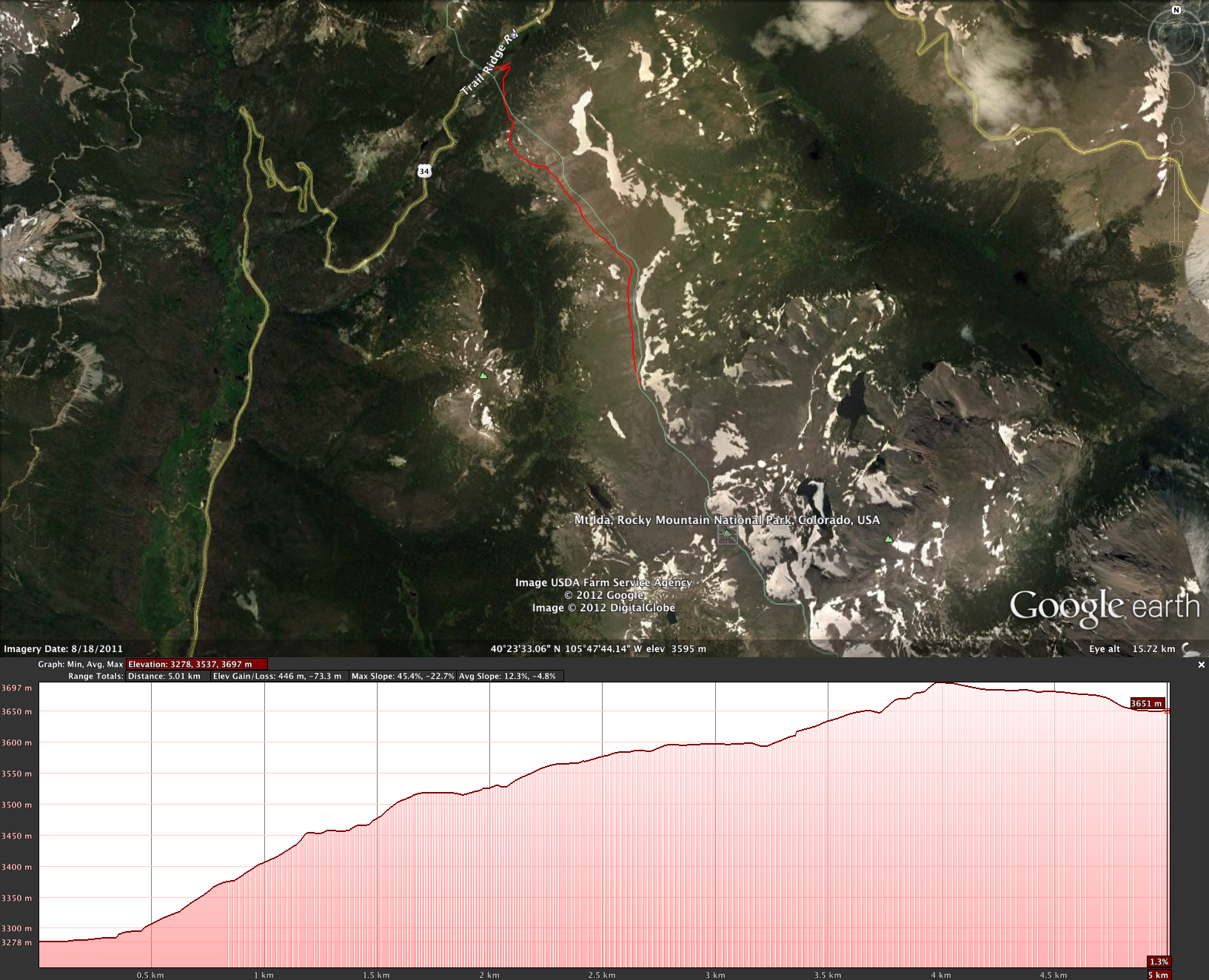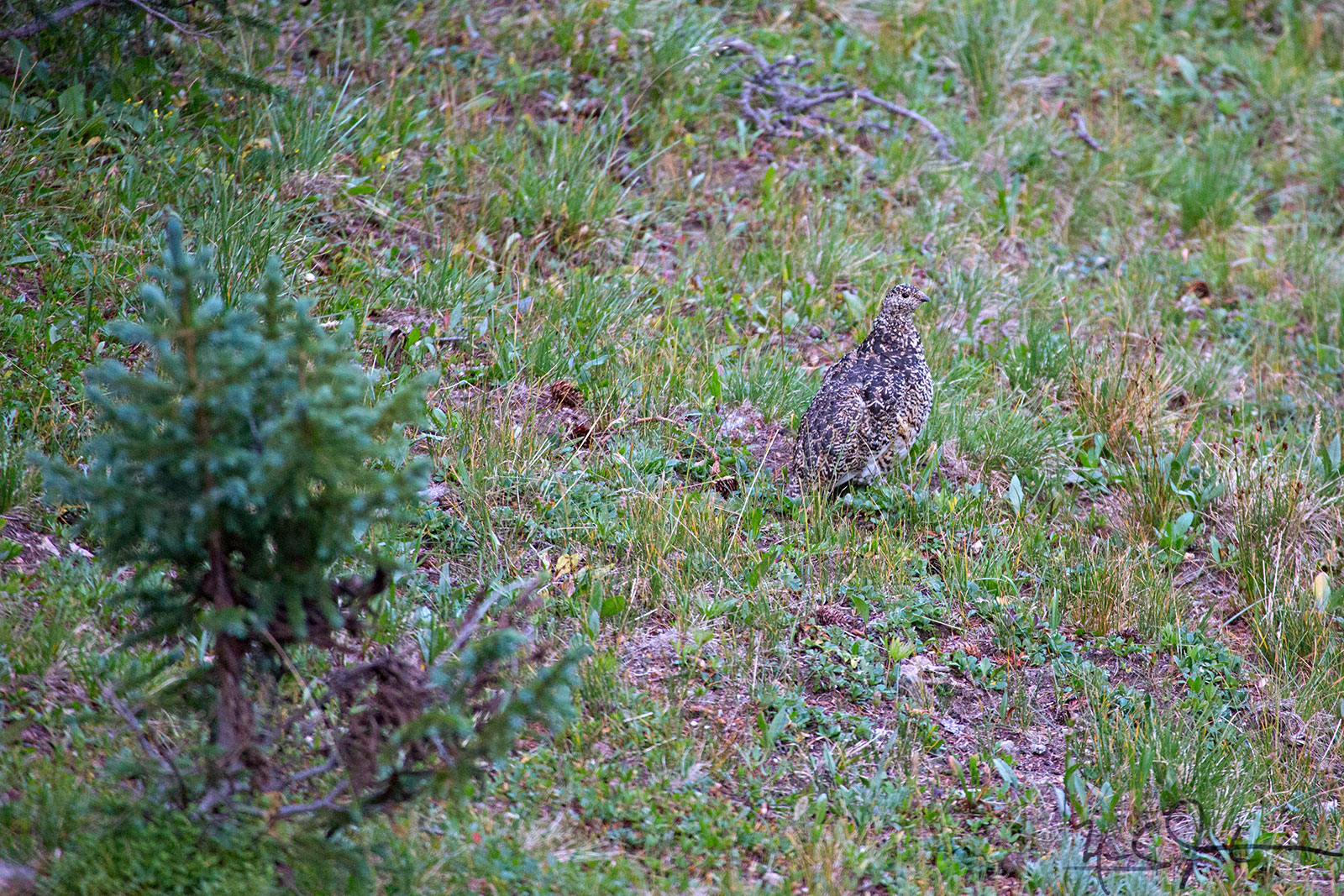On the west side of Rocky Mountain National Park. Not far from my recent hike from Milner Pass towards Mount Ida, but about two thousand feet lower in elevation and a little further west. The trail starts at around 9300 feet MSL and climbs to the Lake at 11,040 feet. There isn't much that is really steep - but it just climbs all the way - for 5.1 miles.
On the way to the trailhead, I paused to take a shot of some nice clouds near Lake Irene.
Sunrise near Lake Irene.
Although it is only August, the elk can already be heard trumpeting early in the morning. Autumn is not far away.
Purple Finch, Carpodacus purpureus.
Timber Lake from the rock fall at its head.
This might be the largest mushroom I have ever seen - bigger than my hand!
It was a good day for mushrooms.
Unnamed lake just west of Timber Lake.









































